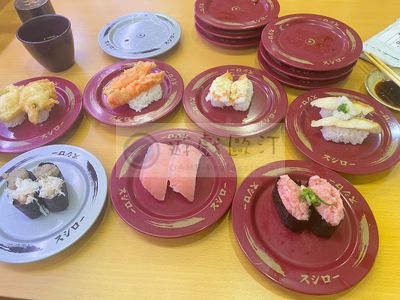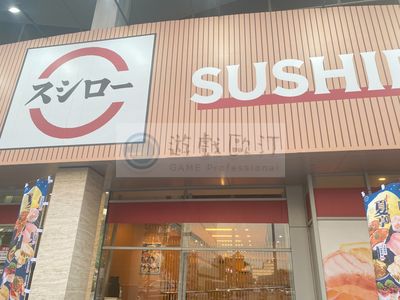日本第一的連鎖迴轉壽司店:壽司郎(Sushiro)
壽司郎(Sushiro)是日本第一的連鎖迴轉壽司店,於1984年於大阪創立。作為市場的領導者,以其高品質的壽司和合理的價格受到廣泛歡迎,並逐漸擴展至國際市場,包含台灣、韓國、新加坡和中國等地,總店數超過1,000間,每年來客數超過1.3億人。商業模式依賴於迴轉壽司的概念,即壽司盤會在輸送帶上轉動,顧客可以自行挑選想要的壽司,並隨時享用。
主要販售各式壽司產品,包括鮪魚、鮭魚、黃鰭魚、花枝等海鮮壽司,並且提供多種不同的刺身、手捲以及炸物如天婦羅、炸雞等。此外,也積極推出創新壽司,如醬油漬鮭魚壽司、燒烤壽司,以及融入當地口味的特殊壽司種類。在甜點方面,提供抹茶冰淇淋、蛋糕、和果子等日本傳統甜點,讓消費者能夠在享用壽司之後品味甜品。飲料方面則有日本茶、啤酒和果汁等可供選擇。喜歡麵食者則有多種拉麵可選擇。
壽司郎的競爭優勢是價格親民。迴轉壽司模式使得顧客可以根據自己的需求選擇壽司數量和種類,無需點整套的壽司餐,讓消費者可以以相對低廉的價格品嘗到新鮮的海鮮壽司。還有壽司質量普遍較高,尤其在日本當地,以嚴格的品質控制著稱,確保食材的新鮮度和美味。此外,店內大多數分店都引入數位點餐系統,可以通過觸控螢幕直接下單,系統會將所點餐點通過專屬軌道送達至桌前,提升用餐便利性和效率。用餐後可以領取集點卡,累積一定數量就可兌換玩具。
然而,壽司郎也存在一些缺點。由於主打大眾市場,其壽司的創意和精緻度無法與高級壽司店相比,部分消費者可能會認為其壽司口感較為普通。此外,因為是連鎖店品牌,其每家分店的水準可能存在差異,某些地點的壽司質量和服務水平會受到店鋪規模、地理位置和人流量的影響。另一些消費者反映,壽司郎的等待時間較長,特別是在熱門時段,經常需要排隊等候用餐,可以預先下載App預定時間。
總體而言,壽司郎憑藉其高性價比和良好的品質控制,成為迴轉壽司市場的主導者。儘管面對一些創意和精緻度上的挑戰,依然在大眾市場中佔有重要地位,並且持續擴展其品牌影響力。
Sushiro is Japan's leading conveyor belt sushi chain, founded in 1984 in Osaka. As a market leader, it is widely popular for its high-quality sushi at reasonable prices and has gradually expanded internationally to countries such as Taiwan, South Korea, Singapore, and China. With over 1,000 locations and an annual customer count exceeding 130 million, Sushiro's business model relies on the concept of conveyor belt sushi, where sushi plates rotate on a conveyor belt, allowing customers to select and enjoy their desired sushi at any time.
Sushiro offers a wide variety of sushi products, including seafood sushi such as tuna, salmon, yellowtail, and squid. Additionally, it provides a diverse selection of sashimi, hand rolls, and fried items like tempura and fried chicken. The chain is also proactive in introducing innovative sushi, such as soy-marinated salmon sushi, grilled sushi, and special sushi adapted to local tastes. In terms of desserts, Sushiro offers traditional Japanese sweets like matcha ice cream, cakes, and wagashi, allowing customers to enjoy a sweet treat after their sushi meal. Beverage options include Japanese tea, beer, and fruit juices, and for noodle lovers, there is a variety of ramen to choose from.
One of Sushiro's competitive advantages is its affordability. The conveyor belt sushi model allows customers to choose the quantity and type of sushi based on their preferences without the need to order an entire set, giving them the opportunity to enjoy fresh seafood sushi at a relatively low price. Additionally, the quality of the sushi is generally high, especially in Japan, where Sushiro is known for its strict quality control to ensure the freshness and flavor of its ingredients. Most of the chain's locations have introduced a digital ordering system, allowing customers to place orders directly through touch screens. The ordered items are then delivered via a dedicated track to the table, improving the convenience and efficiency of the dining experience. After dining, customers can collect points on a rewards card, and once a certain number is accumulated, they can redeem prizes such as toys.
However, Sushiro does have some drawbacks. Since it targets the mass market, the creativity and refinement of its sushi may not match that of high-end sushi restaurants, and some consumers may find the taste relatively ordinary. Additionally, as a chain brand, the quality and service levels can vary from location to location, depending on the store's size, location, and customer traffic. Some customers have also reported long wait times, especially during peak hours, requiring them to wait in line. To address this, customers can download the Sushiro app to reserve a time in advance.
Overall, Sushiro has established itself as a dominant player in the conveyor belt sushi market thanks to its high cost-effectiveness and reliable quality control. Despite facing challenges in terms of creativity and refinement, it continues to hold a significant position in the mass market and is steadily expanding its brand influence.
.jpg)


- 1
- 2
- 3
- 4
